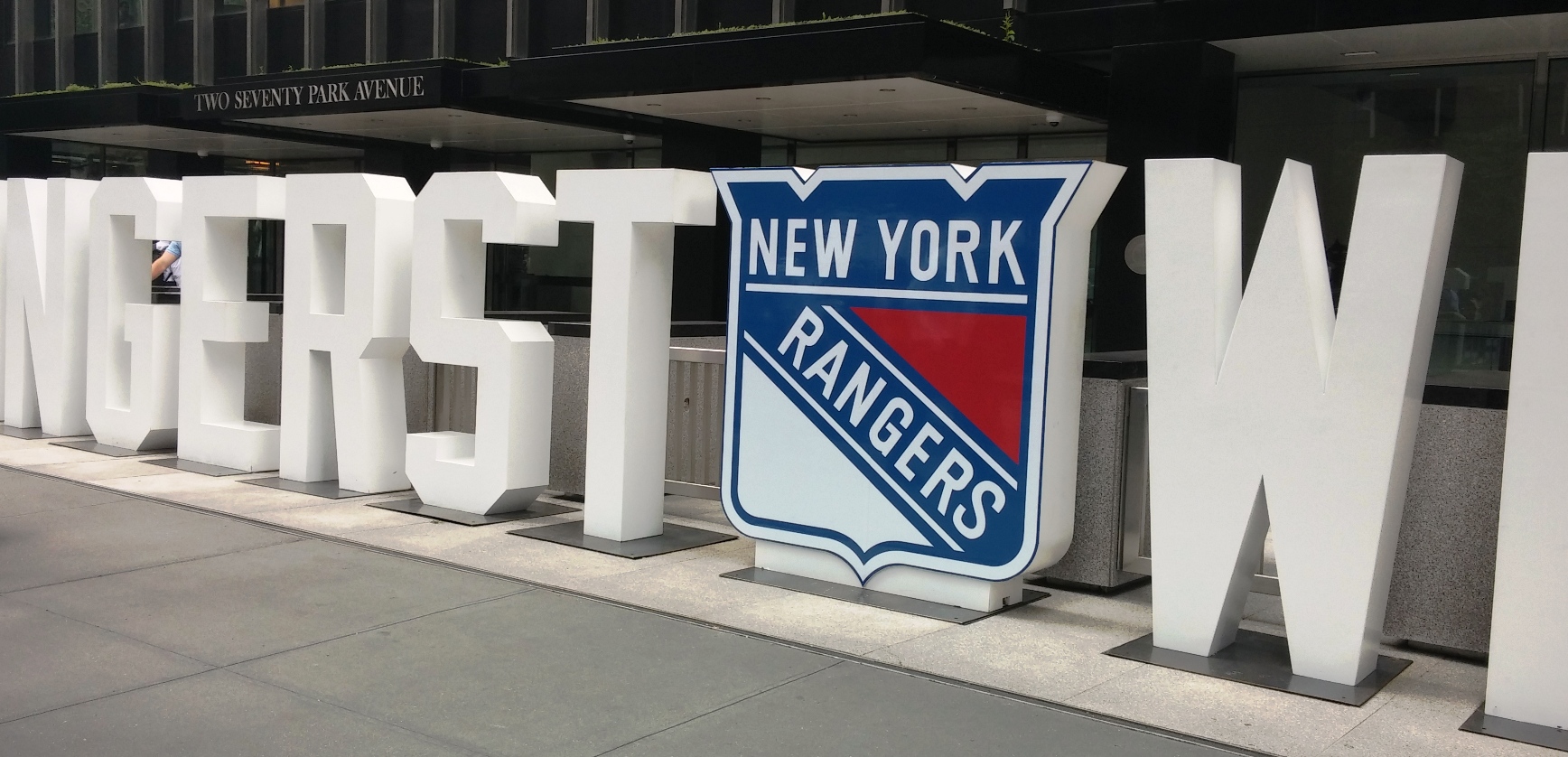The New York Rangers enter the 2012 NHL Stanley Cup playoffs as a number 1 seed, and it’s the first time they have enjoyed that position since they won it all in 1994. That legendary squad was led by Mark Messier, and ended a half-century championship drought for the Blueshirts.
In honor of that feat and the beginning of the 2012 NHL playoffs, take a look at this comparison between the 2012 New York Rangers and the 1994 New York Rangers who would go on to become Stanley Cup champions.
’93-’94 Rangers vs. ’11-’12 Rangers: Team at a Glance
The 1993-94 New York Rangers finished with a 52-24-8 record with 112 points (in 84 games), good enough to win the Atlantic Division, lock up the number 1 seed in the Eastern Conference, and take home the Presidents’ Trophy. Now generally regarded as one of the best teams in NHL history, the Rangers were favorites to win the Stanley Cup with captain Mark Messier leading the charge.
The 2011-2012 New York Rangers finished with a 51-24-7 record with 109 points, eerily similar to the ’94 team’s mark. They are the number 1 seed in the East, but fell short of the Presidents’ Trophy by two points. The hardworking team was one of the major surprises of the season, as nobody projected them to perform at such a high level.
Offensive Punch
The 1994 Rangers were a deep and offensively dynamic club. They had four players with 79 or more points, including two defensemen, Sergei Zubov who led the team with 89 points, including 77 assists, and Brian Leetch with 79 points. Messier tallied 84 points, and Adam Graves had 79 points and a shocking 52 goals. Eight players on the team had more than 20 goals. All told, the club scored 299 goals on the year, tied for 5th most in the league.
The 2012 Rangers, while not entirely anemic, are far from the offensive powerhouse that the 1994 team was. Only one player on this year’s team had more than 70 points, Marian Gaborik, who had 76. He also led the team with 41 goals. All told, the club scored 226 goals during the season, good for a mediocre 13th ranking in the league.
Special Teams
Special teams were a strong suit for the 1994 Rangers. They led the league with a 23% power play conversion rate, and were third in the league in penalty kill, at 84.6%.
The 2012 Rangers are excellent on the penalty kill, at 86.2%, 5th best in the league. However, the power play is atrocious, notching goals only 15.7% of the time, ranking 23rd.
Goaltending
One of the heroes of the 1994 Rangers was goaltender Mike Richter. However, his regular season numbers were fairly modest, a .910 save percentage and 2.57 GAA in 68 games played. He kicked things up substantially in the postseason, however, starting 23 of 25 games and improving his save percentage to .921 and his GAA to 2.07.
Goaltending is the clear strength of the 2011-2012 Rangers, thanks to King Henrik Lundqvist. Lundqvist finished the year with a 1.97 GAA, a .930 save percentage, and ranks 4th or better in wins, save percentage, GAA and shutouts. If the Rangers are to make a real push towards winning it all this year, Lundqvist is undoubtedly the key.
Defense
The 1994 Rangers were an excellent defensive team, surrendering 231 goals on the year, 3rd best in the league. Ten players on the team had a plus/minus rating above +10, and the team’s defenders were some of the most offensively gifted of the bunch, including Leetch and Zubov (see above). In addition, Jeff Beukeboom provided a physical presence, and Kevin Lowe provided veteran guile and a championship pedigree.
This year’s team is also excellent defensively, helping to keep things clean for Lundqvist when everyone is doing their job. They surrendered just 187 goals on the year, 3rd best in the league. Nine players have a plus/minus of +10 or more, and Michael Del Zotto and Ryan McDonagh have emerged as offensive threats. Their excellent play, along with Dan Girardi’s breakout season, allowed former defensive lynchpin Marc Staal to return gradually from concussion. Blocking shots is the hallmark of the team, and all players and fans know by now, if you don’t block shots, you don’t play for John Tortorella.
On a side note – the difference between third best in goals allowed in 1994, 231, and third best in 2012, 187, is one of the major signs of the drastic changes in style of play and scoring levels in the NHL.
Coaching
If the two teams are similar defensively, then perhaps their mirror-image coaches can be thanked.
The 1994 team was led by “Iron” Mike Keenan, a notoriously fierce and nasty coach to play for. It was Keenan’s only season as head coach of the Rangers. Previously, he led the AHL Rochester Americans to a championship. After that, he had mixed results as the head coach of the Philadelphia Flyers and Chicago Blackhawks, appearing in the playoffs every year and the Stanley Cup Finals three times, but never winning.
As a player, the undersized Keenan suited up for several seasons, never approaching the NHL. He played in college for St. Lawrence University in the ECAC.
The 2012 team is led by Tortorella – a notoriously fierce and nasty coach to play for. As mentioned, if you don’t block shots, you won’t get on the ice for this guy. His hardnosed style, while taxing, has made the team disciplined and has maximized their talents. Previously, he led the AHL Rochester Americans to a championship. After that, he led the Tampa Bay Lightning to a Stanley Cup.
As a player, the undersized Tortorella suited up for several seasons, never approaching the NHL. He played in college for the University of Maine, in the ECAC.
This article was first published by Jake Emen on Yahoo! Sports on April 20, 2012


